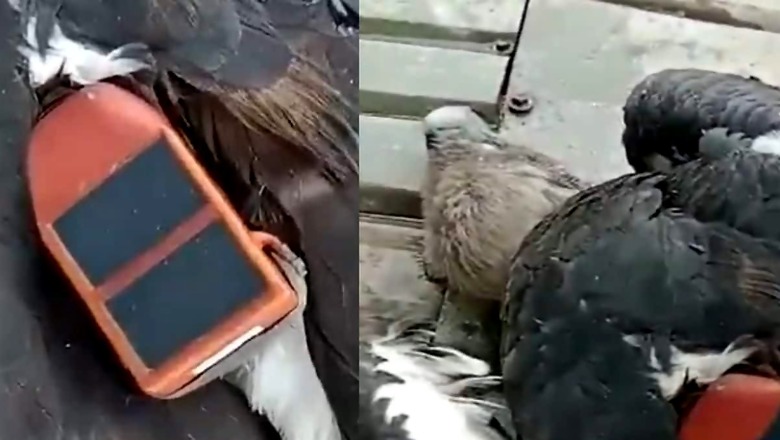
views
A vulture with the word ‘Dhaka’ written on a metallic band around one of its legs was found in a dam in Jharkhand’s Hazaribagh district. According to Sub-Divisional Police Officer (SDPO) B.N. Prasad, the white-backed vulture is a Schedule 1 endangered species now kept at Bishnugarh town for monitoring and treatment purposes.
According to the IUCN Red List of Threatened Species, the white-backed vulture (Gyps africanus) is a bird critically endangered. The Wildlife Protection Act of 1972 lists the raptor as a Schedule-1 species in India, meaning it is given the highest level of protection.
“Bangladeshi spy vulture! Vulture found in Hazaribagh, Jharkhand. There was a stir after a tracker device was found in the vulture… Panic spread after it was declared a Bangladeshi spy,” the caption on X (formally Twitter) reads.
Check the video here:
Bangladeshi spy vulture! Vulture found in Hazaribagh, Jharkhand There was a stir after a tracker device was found in the vulture… Panic spread after it was declared a Bangladeshi spy #spy #SPY #Bangladeshispy #Hazaribagh #Jharkhand #Bangladesh #Bihar pic.twitter.com/hyM4EfUWnG
— Indian Observer (@ag_Journalist) August 13, 2024
Reportedly, a group of fishermen saw the vulture in the waters of the Konar Dam and alerted forest and police officials, who arrived at the spot accompanied by Intelligence Bureau agents.
In addition, a tracking device and the note “If found, please contact [email protected]” were found on the vulture, along with the inscription “gpobox-2624, Dhaka, b67.” As per The Hindu, the bird has been taken by forest officials for medical attention, and it will be monitored for a while.
According to police, a Dhaka-based researcher named John Malot from the UK’s Royal Society for the Protection of Birds (RSPB) released the vulture with a tracking device and a solar radio collar to trace its activities as it flew from Dhaka to Hazaribagh. Currently, the police have denied any connection to the violence in Bangladesh.
Meanwhile, an expert with Saving Asia’s Vultures from Extinction (SAVE) speculated that the vulture was tired and hungry after a long flight, rendering it unable to continue. The likelihood of diclofenac-contaminated meat was also considered.
White-backed vultures are highly specialised obligate scavengers that eat the carcasses of large, grazing mammals such as warthogs, zebras, gazelles, and livestock. They find food by flying at high altitudes and using their excellent eyesight. Their presence is frequently indicative of a nearby cadaver, enticing more scavengers to the feast.
Vultures’ digestive tracts are extremely specialised, allowing them to efficiently consume carrion.
















Comments
0 comment